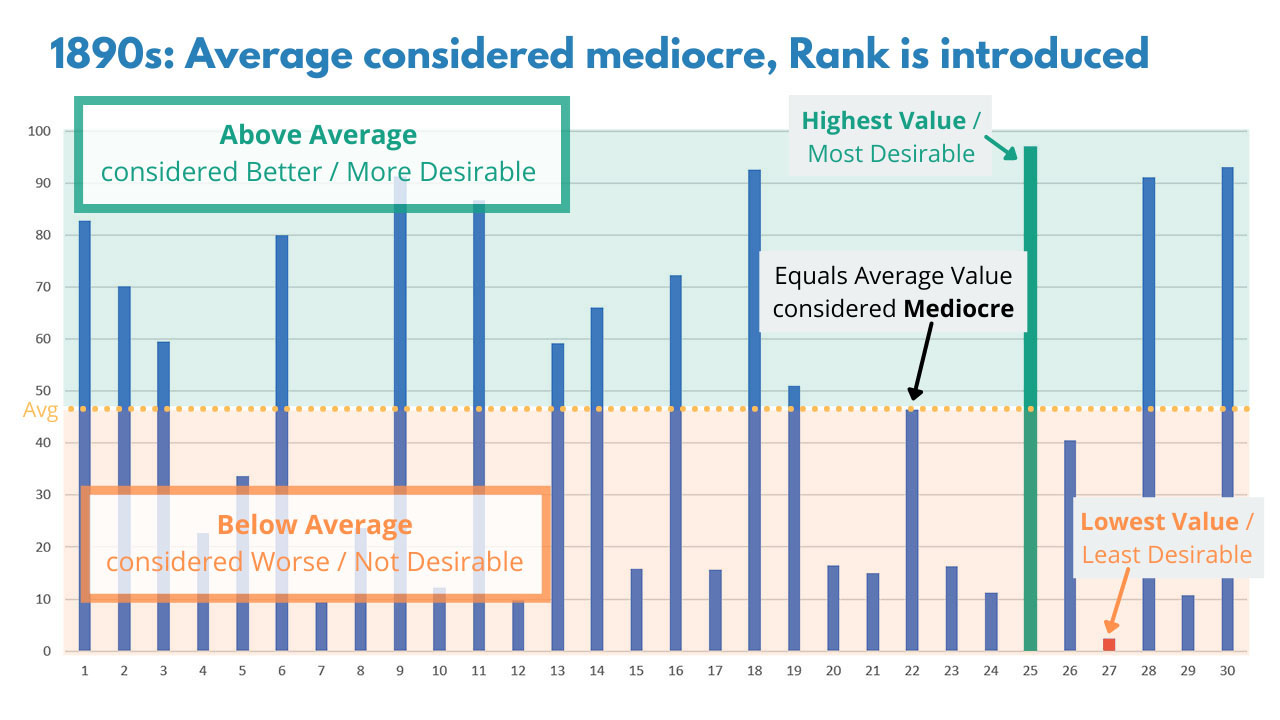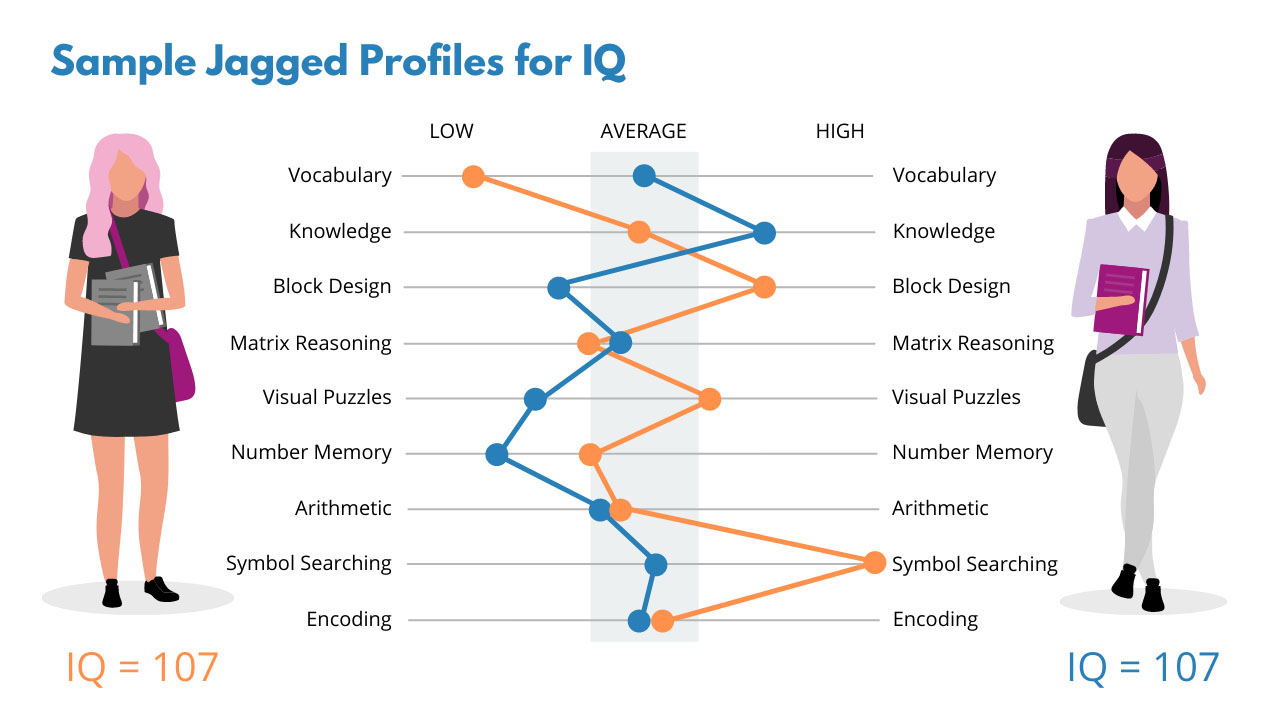The End of Average: 5 Key Takeaways You Should Know

Be honest. How often do you find yourself comparing yourself to others - whether to specific people you know, such as a sibling, your best friend, or even a co-worker, or to a calculated ‘Average’ you saw in a post or article somewhere?
Oftentimes, those quick comparisons might seem benign. They may be quick check-ups to see how you “measure up”. “Am I good enough?” “Should I apply for that job?” “Would I even have a chance?” If you’re doing well by comparison, it might serve as a confidence boost. Or, if you feel like you don’t at least meet Average, then you could feel completely deflated.
But do you truly understand what Average means? You might understand the mathematical definition and calculation, but do you know what Average means in the context of measuring qualities within people?
Todd Rose’s The End of Average is an eye-opening, and research-based book that walks you through understanding the history of calculating Averages in human beings, how it has helped society, and how it has hurt it. He goes on to describe three principles of Individuality - concepts that I believe every individual, parent, manager, and leader should understand.
And whereas Todd Rose’s message seems to be most directed towards improving the education system, my Takeaways are relevant to you as an Individual - concepts that if you truly internalized would change the way you see yourself, live your life, make decisions, and interact with others.
We’re 180+ years into calculating Averages of all types within people. It’s about time each person grasps what Average really means. Below, I share my 5 Key Takeaways from Todd Rose’s The End of Average.
To simplify your reading, here's a summary (with links) of the topics I cover:
- 1. The Perception of Average changes over Time
- 2. Average Describes No One
- 3. The Jaggedness Principle: Talent is not Linear
- 4. The Context Principle: Traits are not Consistent
- 5. The Pathways Principle: No Route Fits All
- In Summary
1. The Perception of Average changes over Time
Is Average something you strive for or something you look to surpass? Would it surprise you to know that being Average was considered most desirable and the Ideal for the first 50 years of calculating Human Averages?
When Adolph Quetelet began calculating Averages for qualities in human beings in the 1840s, his perspective was that the Average represented the Ideal - something to strive for. He didn’t even perceive an acceptable average range. He believed that any deviation from the calculated Average (in either direction: greater or smaller) was a naturally occurring error within the Individual.

For example, say the Average height of a man was 5’ 9”. Just looking at height, a 5’ 9” man would be Ideal. Being 1 inch taller or shorter was less desirable but of equal worth. Quetelet believed that Average was what was natural or perfect in nature. Any variation was due to Individual error.
By the 1890s, Francis Galton evolved the perception of Average. He disagreed with Quetelet’s view that the Average was Ideal. On the contrary, he felt that the Average was Common (or Mediocre), and that clearly there were individuals that were far below and others that were far above Common. He introduced the concept of Rank. Instead of believing that your worth was based upon how close you were to Average, Galton believed someone far greater than Average was of much greater worth. Taking the same example above of a man’s height, this would mean that it’s of greater value to be 5’ 10” over 5’ 8”.

As the ‘science of the Average Man’ evolved, people started having a measuring stick with which to compare themselves. And whether they saw themselves in a positive or negative light changed with the prevailing views of the time.
So if the definition of Average and whether it’s desirable to be Average can change over time, who’s to say what’s best and what you should strive for? Couldn’t the definition of what’s considered most valuable change over time again?
2. Average Describes No One
When you think about Average, most people likely visualize a bell curve, where you imagine that a majority of people (68.2%) will fall within one standard deviation of the Average - meaning you imagine that about two-thirds of the population will fall within a middle range.

The truth is that you have no idea what the actual data looks like. And, that’s part of the problem with taking a snapshot of a mathematical concept and applying it generally across the board to human beings without any context.
Todd Rose goes through numerous, compelling examples where he compares the actual individuals in the dataset to the calculated Average. At a high level, here are just two of his examples:
- First Example: In 1950, there was a study done to measure the body length dimensions of U.S. military pilots as it was thought to impact aircraft cockpit design and function.
- 140 different body length dimensions were measured in 4,063 U.S. military pilots. (Note: These men were partially chosen because they seemed to be of average build and would fit the dimensions of a standard cockpit. So, anyone who seemed to stand out in any dimension was not eligible.)
- Taking solely the 10 dimensions that would most impact cockpit design (e.g. height, chest circumference, sleeve length), the Average was calculated for each of these 10 dimensions. Giving a generous 30% range for each dimension, each individual pilot’s measurements were compared to the Average range.
- How many pilots do you think met the Average range for all 10 dimensions? The answer: 0. Not one pilot (of the 4,063) fell within Average range for all 10 dimensions. And remember, these men were deliberately chosen because they were thought to fit the range.
- Second Example: In 2002, a study was done to map the regions of the brain that light up when doing a verbal memory test.
- After the study, an Average Map was created to reveal the neural circuits involved in verbal memory for the typical brain.
- However, when comparing each individual’s brain map to the Average Map, not one individual brain map resembled the Average Map. Furthermore, none of the maps resembled any of the other maps. Each brain conducting the same functions lit up differently and in different areas. The differences in the patterns were extensive.
- Not only were the results repeatable, the same disparities have been found in brain studies for face perception, mental imagery, procedural learning, and emotion. There is no such thing as an Average Brain.

For more examples like these, I highly recommend reading Todd Rose’s The End of Average. The stories are fascinating, but more importantly, relevant to you as an Individual.
The Bottom Line: All of his examples show that the Average doesn’t describe anyone. This is not an exaggeration; it's a mathematical fact.
So with Takeaway #1, the value of comparing yourself to Average is subjective over time. But with Takeaway #2, Average is irrelevant altogether.
If you’re interested in seeing Todd Rose discuss some of the concepts in his book, I recommend his TEDx Talk: The Myth of Average.
Since you now understand that Average is irrelevant to you and your Success, these next three Key Takeaways focus on how to make your Individuality work for you.
3. The Jaggedness Principle: Talent is not Linear
In the desire to summarize, categorize, and analyze, people are subjected to all sorts of evaluations - such as: IQ Tests, Personality Tests, Health Scans, Credit Scores. It all comes down to summarizing a person to a number value, and then that number is compared to a calculated Average. For the sake of efficiency, you’re compared to an Average instead of seen as an Individual.
For example, take IQ Tests. Two people can have the same IQ, but the Talents that led to that same score can vary greatly. For example, the image below shows the Jagged Profiles for two women with the exact same IQ score. Despite having the same score, you can see that the underlying abilities within each vary greatly. 
This Jaggedness Principle goes beyond IQ scores. What about school grades or résumés? What about Personality Tests? What about the qualities you look for in others - such as friends, mentors, teammates, or even partners?
And this should matter to you because you’re not just trying to get accepted to a school, to get a job, to find a partner, or whatever your goal is. To succeed, you want to intentionally find the right fit for who you are.
I remember learning this when I went to school for engineering. I was lucky to be exposed to different schools and programs. Some were more theory-based. Others were more hands-on with practical activities and labs. I much preferred the latter format that allowed me to build projects and experiment.
If you don’t find the right role for who you are - one that uses your strengths, meets your needs, and values your contributions - you risk becoming frustrated, disengaged, or worse: may end up believing that you don’t have what it takes to pursue your interests.
The Jaggedness Principle reveals that there’s more depth and layers to your Talents. Those layers are clues to help you find the right roles and situations in which you’ll thrive. By doing this, you’ll be more engaged, happier, more successful - all while using your natural talents.
4. The Context Principle: Traits are not Consistent
It turns out that Talent is not enough. Let’s say you know someone who has a knack for getting people’s attention and entertaining them… they’re an engaging storyteller. Does that mean they’ll always be willing and ready to tell a story? Will they always be equally engaging?
It turns out that there’s no Always in the traits of who someone is. The Context Principle describes that an individual’s behavior is a result of the interaction between the traits of a person and the situation they’re in.
So going back to the storyteller, are they more comfortable talking to someone one-on-one, in a small group, or to a large audience? Are they more comfortable with people they know well, or prefer an audience of complete strangers? Are they telling spontaneous stories on-the-spot, or are they sharing scripted or rehearsed stories?

You can have two phenomenal storytellers who each thrive in completely different scenarios. One may prefer to just share stories amongst the comfort of close friends. Whereas someone else prefers to be much more of a performer onstage with a larger audience. Both of these scenarios are quite different, and if you were to switch each person into the other’s scenario, there’s no predicting how that would go. One may roll with it, while the other may completely shut down.
You may see this in your own life. You may be one way at school or work, and a different way while at home. Or you may act differently amongst peers vs. when a boss or parent is around. There’s no judgment in inconsistent behavior - simply more for you to learn about yourself so that you can intentionally choose situations and environments in which you’ll thrive.
In my mind, I see the Context Principle as the environmental variables that impact your behavior and performance. Think back to the times you’ve been most comfortable and shined. What do those instances have in common? How would you describe the conditions, environments, and people involved?
5. The Pathways Principle: No Route Fits All
There are infinite ways to get from point A to point B. Yes, I could be referring to geographic locations, but I’m also referring to milestones in your life. Most people have an idea as to what age they should be when they: graduate from high school, move out of the home they grew up in, have their first job, get married, have kids, get promoted, etc.

First of all, none of these events are required in life. They’re all optional. And if you choose to do any of them, the “When” is entirely on your Individual timeline. But in a world where stats and Averages are shared like universal truths, you likely have some mental hang-ups of where you feel you should be in life right now.
The Pathways Principle states two distinct points:
- There are numerous valid ways to achieve any outcome you desire (in all aspects of your life)
- The optimal path for you depends on your Individuality
One of the interesting references in the Pathways Principle section of The End of Average, is how different developmental stages were observed and recorded and how this is how we’ve come to accept the stages that babies, toddlers, and children go through - for example: from crawling to walking. But the truth is that there’s no single path or timeline for how babies learned to move.
Again, Averages can be calculated. But those Averages don’t reflect any single child’s development pathway (tying back to Takeaway #3). Furthermore, these Averages only reflect the groups that were observed or measured. Your customs (whether cultural or geographic) and experiences impact your timelines. For example, there are cultures in parts of the world where babies never went through a crawling phase.
And this leads to the most common discussion I have in my work: “Is it too late for me to…?” Whether it’s: change careers, get a degree, go back and get a different degree altogether, pursue your dream, travel the world, etc. People often hold themselves back because of this imaginary belief in “It’s not the right time.” or “It’s too late.” The Pathways Principle assures you that there’s no “right time”. Ultimately what matters is what’s right for you.
In Summary
In a world of information overload and soundbites, it’s easy to get distracted with tidbits of data - especially hearing about Averages and wondering how you measure up. However, it’s important to scratch beyond the surface to really understand what these numbers mean in general and what they specifically mean for you.
In the end, Averages don’t mean anything for you as an Individual. They don’t reflect your specific Talents, abilities, circumstances, or experiences. The only way to create a life that’s right for you is to focus on the three Principles of Individuality:
- Jaggedness Principle: None of your abilities are one-dimensional. Explore the components that contribute to that Talent to gain more insight on what activities and roles are best suited for you.
- Context Principle: It’s not enough to have the right task. You need to have the right scenarios to thrive too. Take note of the environments, scenarios, and people with which you behave the way you want to.
- Pathways Principle: Timing is a factor too. There’s no such thing as too early, on time, or too late across the board. What matters is what’s the right path and timing for you.
This post is also shared as an article on LinkedIn: https://www.linkedin.com/pulse/end-average-5-key-takeaways-you-should-know-elvira-marie-chang


